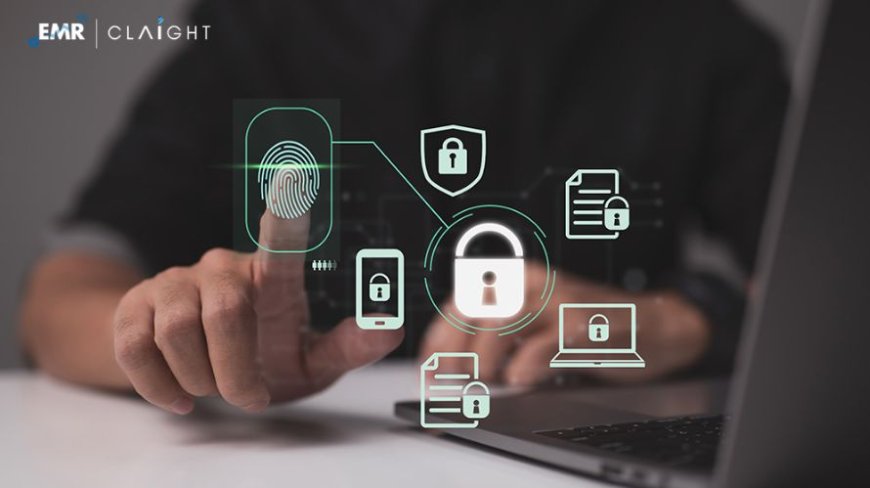Passwordless Authentication Market: A Comprehensive Look at Its Growth and Future
Explore the growing passwordless authentication market, enhancing cybersecurity and user experience. Learn about trends and future growth projections.

Understanding Passwordless Authentication
Passwordless authentication refers to the process of verifying a user’s identity without requiring a password. This can be achieved through technologies such as biometrics (fingerprint or facial recognition), hardware-based tokens, magic links, or one-time passcodes (OTPs) sent to verified devices.
The concept addresses both usability and security. Users often struggle with remembering multiple complex passwords, while enterprises face escalating risks and costs associated with password management. A passwordless system reduces friction in the login process while minimizing the surface area for cyberattacks.
Popular technologies include:
Biometrics: Fingerprint scans, facial recognition, and voice recognition.
Hardware tokens: Physical devices like YubiKeys.
Software tokens: OTPs delivered via secure apps.
Magic links or email verification: Clickable links sent to registered emails to confirm identity.
Key Drivers of the Passwordless Authentication Market
Several interrelated trends and challenges are contributing to the rising adoption of passwordless authentication solutions:
Increasing Cybersecurity Threats
Cyberattacks are becoming more sophisticated and damaging. With phishing accounting for over 80% of reported security incidents, the need to eliminate password reliance is more urgent than ever. Passwords are often the weakest link in cybersecurity strategies.
Passwordless systems reduce attack vectors, such as stolen or reused credentials. Authentication based on biometrics or secure tokens is much harder to intercept or replicate.
Regulatory Compliance
Governments and industry regulators are tightening security protocols and requiring stronger authentication frameworks. Regulations like GDPR, HIPAA, and PSD2 are compelling organizations to implement more robust identity verification methods.
Passwordless technologies help organizations meet these requirements by offering multi-factor and biometric-based authentication mechanisms.
Improved User Experience
Poor password practices—like forgetting, reusing, or weak passwords—cause friction and lost productivity. Passwordless methods simplify the login process, creating a seamless user experience without compromising security.
Enterprises are leveraging passwordless systems to reduce IT support tickets, streamline workflows, and increase user satisfaction across internal and customer-facing systems.
Surge in Remote Work and BYOD Policies
The rise of remote work has led to an explosion in endpoint devices and distributed access points. Passwordless solutions allow secure access to enterprise systems without relying on vulnerable VPNs or outdated password protocols.
Additionally, BYOD (Bring Your Own Device) policies require stronger security methods that don’t rely on static passwords shared across devices.
Advancements in Biometric Technology
Biometric authentication has rapidly evolved, offering higher accuracy and lower error rates. With widespread adoption in smartphones and laptops, users are already familiar with fingerprint and facial scans, accelerating market acceptance.
Market Segmentation
The passwordless authentication market can be categorized by type, component, authentication method, end-user, and geographic region.
By Type:
Single-factor authentication (SFA)
Multi-factor authentication (MFA): Passwordless MFA is gaining traction, combining biometrics with device verification.
By Component:
Hardware: Devices like USB tokens and biometric scanners.
Software: Authentication platforms, SDKs, and identity management solutions.
Services: Implementation, consulting, and managed security services.
By Authentication Method:
Biometrics
Magic links
One-time passcodes
Push notifications
QR codes or device proximity
By End-Use Industry:
Banking, Financial Services, and Insurance (BFSI): Driven by strong regulatory requirements and financial fraud prevention.
Healthcare: Protecting sensitive patient data and complying with HIPAA and similar laws.
Retail & E-commerce: Ensuring frictionless and secure checkout and login processes.
IT & Telecom: Facilitating secure remote access and managing large user bases.
Government & Public Sector: Protecting national data and supporting digital identity initiatives.
Regional Insights
North America
North America holds a significant share of the passwordless authentication market, led by the United States. High adoption rates in enterprise security, the presence of major tech firms, and strong cybersecurity regulations contribute to market growth. The National Institute of Standards and Technology (NIST) actively supports passwordless standards, such as FIDO2.
Europe
Europe follows closely, bolstered by GDPR mandates and strong digital identity infrastructure in countries like Estonia, the UK, and Germany. Public-private partnerships are accelerating implementation in both private and government sectors.
Asia-Pacific
The Asia-Pacific region is experiencing rapid growth, especially in countries like China, Japan, South Korea, and India. Increasing smartphone penetration, digital banking adoption, and rising cybercrime awareness are driving demand for passwordless solutions.
Latin America and MEA
Though still emerging, regions like Latin America and the Middle East & Africa are showing increased interest in passwordless authentication, particularly in sectors like banking and mobile commerce.
Key Players in the Passwordless Authentication Market
The market features a mix of established cybersecurity firms and innovative startups. Key players include:
Microsoft – Windows Hello and Azure AD support passwordless login via biometrics and FIDO2 keys.
Okta – Offers identity and access management with passwordless options.
Ping Identity – Provides enterprise-grade authentication solutions.
Duo Security (Cisco) – Supports device trust and passwordless login methods.
HYPR Corp. – Specializes in decentralized authentication using FIDO protocols.
Auth0 (Okta) – Offers a developer-friendly identity platform with passwordless capabilities.
ForgeRock – Focuses on digital identity across large enterprise environments.
Emerging Technologies and Trends
FIDO2 and WebAuthn
The FIDO Alliance and the W3C have developed standards like FIDO2 and WebAuthn to enable passwordless authentication across web browsers and applications. These standards eliminate passwords using public-key cryptography and are widely supported by modern browsers and devices.
Decentralized Identity (DID)
Decentralized identity uses blockchain technology and cryptographic techniques to give users control over their digital identities. It eliminates reliance on centralized servers, reducing vulnerability and enabling passwordless authentication through verified credentials.
Behavioral Biometrics
Beyond static biometrics, behavioral biometrics analyze how users interact with devices—such as typing speed, mouse movement, and screen swipes. These patterns offer an additional layer of authentication in real-time.
AI and Machine Learning
AI-powered risk engines assess contextual data—such as location, device health, and behavior—to determine if login attempts are legitimate. This enables adaptive passwordless authentication that responds dynamically to risk levels.
Challenges in Adoption
Despite its many advantages, passwordless authentication also faces certain challenges:
Integration with Legacy Systems
Many organizations still rely on outdated infrastructure that isn’t compatible with modern passwordless protocols. Integration requires careful planning and investment.
Privacy Concerns
Biometric data, once compromised, cannot be changed like a password. Organizations must ensure strict data protection policies and compliance with data laws.
Cost of Implementation
While software-based solutions may be cost-effective, hardware tokens and biometric scanners can be expensive, especially for large-scale deployments.
User Education
Users must understand and trust passwordless systems. Successful adoption requires awareness campaigns and simplified onboarding processes.
Future Outlook
As cybersecurity threats grow and the need for seamless digital experiences rises, the passwordless authentication market is poised for sustained expansion. Continued investment in identity technology, coupled with broader industry standardization, will help drive global adoption.
By 2034, the global passwordless authentication market is expected to reach USD 68.29 Billion, up from USD 16.59 Billion in 2024, reflecting how integral these technologies will become. Organizations that adopt passwordless systems will not only improve their security posture but also enhance user satisfaction, reduce IT costs, and stay ahead in a digital-first world.
Media Contact
Company Name: Claight Corporation
Contact Person: Chander Deep, Corporate Sales Specialist
Email: sales@expertmarketresearch.com
Toll Free Number: +1–415–325–5166 |
Address: 30 North Gould Street, Sheridan, WY 82801, USA
Website: www.expertmarketresearch.com
Tags:
Related Posts
Luxury Projects in Gurgaon: Where Dreams Find a Home
May 22, 2025 0





































































![https //g.co/recover for help [1-866-719-1006]](https://newsquo.com/uploads/images/202506/image_430x256_684949454da3e.jpg)
























![[PATREON EXCLUSIVE] The Power of No: How to Say It, Mean It, and Lead with It](https://tpgblog.com/wp-content/uploads/2025/06/just-say-no.jpg?#)




















































